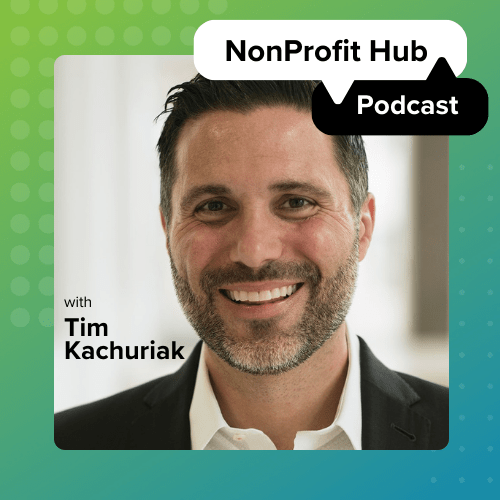Nonprofit organizations face unique challenges when it comes to board management. These challenges include limited resources, complex regulations and legal requirements, and the need for transparency and accountability among board members. In recent years, board management software has emerged as a solution to these challenges, helping nonprofit boards streamline administrative tasks, improve communication and collaboration, and increase transparency and accountability.
One of the most significant benefits of board management software is its ability to save time and effort for board members. Administrative tasks such as scheduling meetings, sending reminders, and sharing documents can be time-consuming and tedious, taking up valuable time that could be better spent on strategic discussions and decisions. Board management software automates these tasks, freeing up time for board members to focus on more important matters.
Automating administrative tasks can also help reduce errors and improve efficiency. For example, scheduling software can automatically send out reminders to board members and provide real-time updates on changes to meeting schedules. Document management software can automatically store and organize documents, making it easier for board members to find what they need quickly.
Improved communication and collaboration is another key benefit of board management software. With its ability to share documents, collaborate on projects, and communicate more effectively, board management software can help improve decision-making and make board meetings more efficient. Better communication and collaboration can lead to more efficient board meetings, which can ultimately save the organization time and resources. Enhanced communication and collaboration between nonprofit leaders can also help build trust and foster a sense of community. With board management software, board members can easily communicate with each other, share ideas, and provide feedback. This can help build relationships and strengthen the board’s overall effectiveness.

Board management software can also help ensure better transparency and accountability. By storing and accessing financial information, meeting minutes, and other necessary documents, board management software makes it easier to compile the information needed for annual filings such as Form 990. Additionally, the software can track attendance and board member compensation, which are necessary for reporting on Form 990. By automating administrative tasks and keeping all relevant information in one place, board management software can help ensure that nonprofit boards are more transparent and accountable.
Board management software can also help ensure that all board members are up to date with the latest information, promoting accountability and better decision-making. With the ability to access documents and information from anywhere, board members can stay informed and make informed decisions, even if they are unable to attend meetings in person. This can help ensure that the board is making decisions based on the best available information, rather than relying on incomplete or outdated information.
The software can also improve the security of sensitive information and reduce the risk of data breaches. By ensuring that information is secure and accessible only to authorized personnel, board management software can help protect the organization’s reputation and prevent potential legal issues. Board management software can help ensure that sensitive information such as financial data and personal information is stored securely and that access to this information is closely monitored and controlled.
When selecting board management software, there are several key features to consider. A user-friendly interface is essential for board members with varying technical abilities. The software should be intuitive and easy to use, requiring minimal training for board members of all technical levels. A user-friendly interface can make it easier for board members to access the information they need and perform tasks without requiring extensive training or customer support.
Innovative features are another critical consideration when selecting board management software. The software should include features such as scheduling meetings, sending reminders, virtual board meetings, sharing documents, tracking attendance, and creating custom groups. Having robust features can make it easier to manage board-related tasks and ensure that board members have access to the information they need to make informed decisions. The more comprehensive the features, the more useful the software is for the organization. You shouldn’t need multiple softwares to manage board governance. If your current board management software requires additional software like Zoom or Teams, it may be time to rethink your tech stack.
Customizable options are also essential when selecting board management software. The software should be customizable to meet the unique needs of each organization, committee, and team. This usually looks like private workspaces, drag and drop meeting agendas and cloud storage integrations. Having customizable options can make it easier to adapt the software to meet the specific needs of your nonprofit. This flexibility can help the organization manage its operations more efficiently and effectively. For example, the software may allow you to create custom groups for committees or working groups, or to set up different access levels for different board members depending on their roles.

Affordable pricing is also critical when selecting board management software. The software should offer pricing plans that are accessible to nonprofits of all sizes and budgets. There are even free options out there! Affordable pricing can help ensure that nonprofits can access the software they need to manage their operations effectively without straining their budget. Many board management software providers offer pricing plans based on the number of users or the number of features included, so it’s important to choose a plan that meets your organization’s needs without overspending.
It’s also important to consider the level of support and training provided by the software provider. Board members often need assistance with using the software, and it’s important to have a reliable and responsive support team to help with any issues that arise. Many board management software providers offer training materials, online resources, and customer support to help organizations get started and use the software effectively. It is best practices to find a solution that offers 24/7 (real-life) customer support.
Board management software can also help nonprofit organizations manage their resources more effectively. According to a report from the National Council of Nonprofits, “Board management software can help nonprofits to be more efficient, effective, and accountable in their governance practices, including budgeting, resource management, and oversight of compliance with laws and regulations.” By tracking attendance and board member compensation, the software can help ensure that the organization is staying within budget and meeting its financial obligations. Furthermore, the software can also help improve the productivity of meetings by ensuring that board members are using their time effectively. As noted by a report from TechSoup, “Using board management software, you can ensure that each board member comes to the meeting with a clear understanding of the topics to be discussed and can use their time effectively. This increases the likelihood of productive meetings that are focused and results-driven.”
Board management software can help streamline board meetings and make them more productive. With features like automated agenda creation, real-time note-taking, and action item tracking, board members can stay on track during meetings and ensure that they are making progress on important initiatives. The software can also help ensure that board meetings are inclusive and accessible, with features like video conferencing and remote access allowing board members to participate from anywhere in the world. By making board meetings more efficient and effective, board management software can help nonprofit organizations achieve their goals more quickly and with less frustration.
Board management software can also help improve the onboarding process for new board members. With features like a digital orientation portal and access to historical meeting minutes and other documents, new board members can quickly get up to speed on the organization’s history, goals, and current initiatives. This can help new board members become productive more quickly, contributing their skills and expertise to the organization more effectively. By providing a comprehensive onboarding experience, board management software can help ensure that the board is functioning at its highest level from the start.
Another benefit of board management software is that it can help nonprofit organizations manage their committees and working groups more effectively. With features like customizable groups and access levels, board management software can help ensure that the right people have access to the right information and can collaborate on initiatives efficiently. The software can also help track the progress of committee and working group initiatives, providing a centralized location for all members to stay up to date on progress and deadlines. By improving the management of committees and working groups, board management software can help nonprofit organizations achieve their goals more effectively and efficiently.

In conclusion, board management software is a valuable tool for nonprofit organizations looking to improve their effectiveness and efficiency. As noted by a report from the Stanford Social Innovation Review, “By investing in board management software, nonprofit organizations can streamline governance processes and improve communication, which can lead to stronger organizational performance and better social outcomes.” When selecting board management software, it’s important to consider factors such as user-friendliness, robust features, customizable options, affordable pricing, and level of support and training provided by the software provider. With the right board management software in place, nonprofit boards can save time, increase efficiency, and make more informed decisions. As noted by a report from the National Council of Nonprofits, “Effective board management software can help a nonprofit organization operate more effectively and efficiently, freeing up staff and board time to focus on the organization’s mission.”







